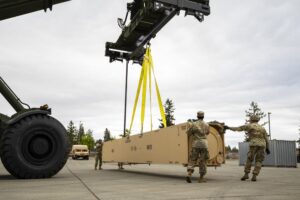The Pentagon’s lead technology official has discussed lowering the costs of hypersonic weapons with at least one firm working in the area, telling reporters she’s confident the new systems can be more affordable when they move into regular production cycles.
Heidi Shyu, the under secretary of defense for research and engineering, said automating manufacturing processes and buying in larger quantities over time will help drop the price for future hypersonic weapons.

“[Industry] will develop a production line process to drive down the cost, as in every component and product that we ever buy. So that’s what’s important to understand. They will automate processes instead of hand-building processes. So that will drive the cost down,” Shyu said. “[The cost] will come down as a function of time. But we’re also looking at different technologies. What are different propulsion technologies? What are different material technologies? What are the different types of fundamental technologies that can help drive the cost down as well.”
Shyu has previously said she hopes to make future systems, such as the Army’s Long Range Hypersonic Weapon and Navy’s Conventional Prompt Strike, “more affordable” and noted the first unit price will be higher due to their developmental nature (Defense Daily, Oct. 14).
“This first unit is pretty expensive. Not surprising, right,” Shyu said. “I very much wanted to drive the costs down. There’s various different ways to drive the costs down. [First] is, producing one system or 10 systems, that’s going to be expensive. Once you get into production the cost is going to go down. So I want [industry] to think about what are the things they ought to be doing to [make into a product] and drive the cost down. And also what are the technologies we ought to be developing to continue to drive down the cost curve down”
Companies working to support hypersonics programs such as LHRW and CPS include Lockheed Martin [LMT], Raytheon Technologies [RTX], Dynetics [LDOS], General Atomics.
Shyu said she also remains confident the Army and Navy can reach their initial fielding dates for their respective hypersonic weapons, noting the two services’ close collaboration on the developmental and manufacturing processes.
“Since it’s the same system, I don’t see why the Navy couldn’t field it by ‘25. I think in terms of the Army-Navy team, they’re on a good pace,” Shyu said.
The Army has already completed fielding the ground equipment to the unit set to operate its first hypersonic weapon battery and will deliver the first live hypersonic missile rounds around October of this year (Defense Daily, Oct. 13 2021).